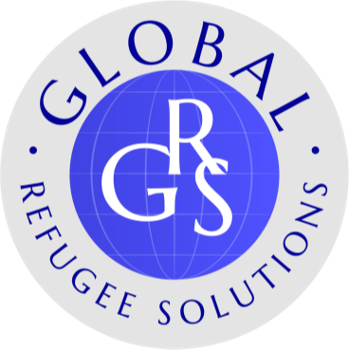United States
Learn more about the region below
Overview
The United States, with a population of approximately 340 million, remains one of the world’s top destinations for immigrants and refugees. In 2023, over 47.8 million immigrants lived in the U.S., representing 14.3% of the total population. The U.S. also resettles tens of thousands of refugees annually, making it a global leader in humanitarian admissions.
Country Facts
- Population: 340.1 million (July 2024)
- Immigrant Population: Over 47.8 million (2023)
- Refugees Resettled (2023): 60,050
- Top Resettlement States: Texas, New York, California, Kentucky, Pennsylvania
- Total Refugees Resettled Since 1975: Over 3 million
- GRS Response: GRS partners with local U.S.-based organizations to support resettled refugees through housing assistance, job placement, and community integration programs in key states.
GRS Home Base & Impact in Colorado
Colorado's Foreign-Born Population and GRS Involvement
Colorado is home to a diverse and growing immigrant population, with approximately 9.6% of the state's population being foreign-born, which accounts for around 563,101 individuals. This includes refugees, asylum seekers, and other immigrants who have made Colorado their home. GRS is committed to supporting these communities as they rebuild their lives and contribute to the state.
Foreign-Born Population Breakdown in Colorado:
- Total Foreign-Born Population: 563,101 (9.6% of Colorado's population)
- Naturalized Citizens: 45% of Colorado’s immigrant population has become naturalized U.S. citizens.
- Undocumented Immigrants: 34% of the immigrant population, or 190,000 individuals, are undocumented.
GRS Programs in Colorado: GRS works within Colorado to assist immigrant and refugee populations by offering a range of services. We collaborate with local community organizations, governmental agencies, and volunteers to ensure that newcomers can access resources for housing, healthcare, employment, and legal support.
Our Efforts in Refugee Resettlement and Support:
- Resettlement Support: GRS helps refugees resettle by providing orientation programs, language classes, and cultural integration support to ease the transition into life in Colorado.
- Economic Empowerment: Through partnerships with local businesses, we assist refugees in securing employment opportunities. Our job placement programs have successfully helped many refugees gain economic independence.
- Educational Support: GRS offers educational resources, from school enrollment assistance for children to career development programs for adults.
Crisis
The U.S. refugee resettlement program, established in 1980, has long been a lifeline for people fleeing war, persecution, and political unrest. While the refugee cap fluctuates yearly, recent years have seen efforts to rebuild the program following significant cuts. In 2023, the U.S. resettled over 60,000 refugees, with the Biden administration maintaining a ceiling of 125,000 admissions for fiscal years 2022–2024.
The resettlement process is one of the most rigorous in the world, involving screening by multiple federal agencies, security and health checks, and interviews by Homeland Security officers. Refugees are selected based on vulnerability and humanitarian need, often recommended by the UNHCR. Despite its strengths, the system faces challenges such as processing delays, limited local capacity, and fluctuating political support.
Frequently Asked Questions (FAQs)
Why does the U.S. resettle refugees?
To provide protection to the most vulnerable, including survivors of violence, women and children at risk, and those with urgent medical needs. It's a longstanding humanitarian and strategic policy.
How does GRS support refugees once they arrive in Colorado?
GRS provides a variety of support services, including housing assistance, employment training, language classes, and cultural orientation. We also help families integrate into the community through social programs and provide resources for self-sufficiency.
How are refugees chosen for resettlement in the U.S.?
The UNHCR identifies the most vulnerable refugees and refers them to the U.S., where they undergo an extensive vetting process before approval.
How long does the resettlement process take?
The process typically takes 12–24 months and includes medical exams, security screenings, and interviews with multiple federal agencies.
What support do refugees receive after arrival?
Refugees receive initial assistance through resettlement agencies for housing, job placement, English language training, and school enrollment.
How does GRS support refugee education?
GRS promotes equal access to quality education for refugee and immigrant communities to empower them with skills for a better future.
How has the refugee cap changed over time?
Caps have varied dramatically: it was lowered to 15,000 in 2021 under the Trump administration but raised to 125,000 under President Biden in recent years.
How can I get involved with GRS?
You can volunteer, donate, or apply for career and internship opportunities with GRS to help refugees.
